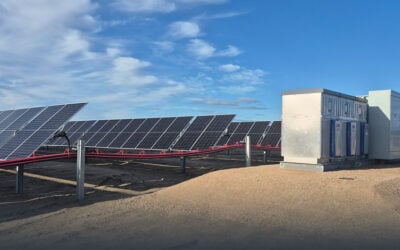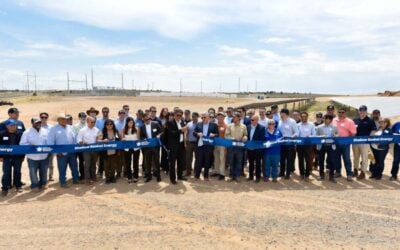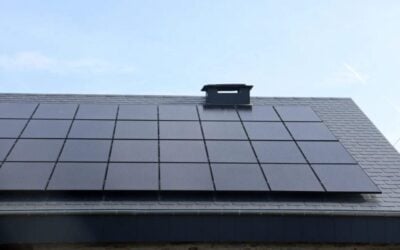
The Illinois General Assembly’s passing of a major energy bill, including a 3GW energy storage target, has been welcomed by environmental advocacy groups and trade associations.
During the closing days of the US state legislature’s October Veto Session, the lower House voted to adopt Senate Bill 25 (SB 25), known as the Clean and Reliable Grid Affordability (CRGA) Act on 29 October.
The upper Senate followed suit the next day. The bill now goes to the desk of Illinois governor JB Pritzker to be signed into law.
The bill directs state authorities to conduct a series of energy storage procurements for electric utilities, to put 3GW of storage resources into operation or contracts by 31 December 2030.
Try Premium for just $1
- Full premium access for the first month at only $1
- Converts to an annual rate after 30 days unless cancelled
- Cancel anytime during the trial period
Premium Benefits
- Expert industry analysis and interviews
- Digital access to PV Tech Power journal
- Exclusive event discounts
Or get the full Premium subscription right away
Or continue reading this article for free
Alongside this are measures to solidify funding for solar PV and wind, give utilities and state agencies new energy planning tools, expand energy efficiency programmes and introduce new programmes and incentives for consumer-sided distributed energy resources (DERs) such as rooftop solar and home battery storage.
Pritzker publicly backed the bill previously and last week after its passing that Illinois is responding to rate hikes from utility companies and actions from the Trump Administration that the governor said are “blocking the ability to bring lower-cost energy options online.”
A frequent media sparring partner for the US president, Pritzker said the passing of the CRGA is “an important step that will help lower utility bills and make our electrical grid stronger.”
“This legislation takes two routes toward affordability,” Pritzker said.
“First, it will accelerate clean energy projects with new grid-scale batteries and other clean energy technology to increase the available electricity supply. Second, it will require utility companies to help their consumers to lower their utility bills and access energy-efficient resources. This bill will build upon the Climate and Equitable Jobs Act, positioning Illinois to keep growing our clean energy economy and creating good-paying jobs in communities across the state.”
The bill’s passing is the result of ongoing efforts by Illinois politicians to introduce a coherent energy storage strategy that includes a target. One bill, House Bill 3758 (HB3758), would have set a 15GW target and was first read into the record in March.
‘Solid foundation to address rising electricity demand and power price volatility’
Solar Energy Industries Association (SEIA) CEO Abigail Ross Hopper said the Act “is a blueprint for how to meet growing electricity demand while keeping costs down and building a stronger, more resilient grid.”
“By investing in solar, storage, and a forward-looking virtual power plant programme, this bill will create good jobs and empower Illinois families and businesses,” Ross Hopper, who recently announced she is stepping down from leading SEIA after almost nine years, said.
E2, a nationwide collection of businesses and investors advocating for policies benefitting the economy and environment, welcomed the “major milestone in clean energy”. E2 recently published a report which highlighted Illinois’ position as a clean energy leader among states in the US Midwest.
“In light of federal rollbacks of clean energy tax credits and environmental protections, it is more important than ever that Illinois remains steadfast in its commitment to creating a clean energy economy,” E2 state advocacy director Micaela Preskill said.
The Union of Concerned Scientists (UCS) noted that the legislation comes amid not just Trump’s attacks on clean energy but also spikes in electricity bills that are caused in part by increased demand from data centres.
A UCS factsheet about the CRGA published earlier in the year pointed out that a supply crunch and unprecedented increase in electricity demand from data centres was leading to jumps in electricity costs for customers of Ameren and ComEdison, two of the state’s main utilities.
UCS applauded the passing of earlier climate legislation—the Climate and Equitable Jobs Act (CEJA)—that put in place a 2050 net zero target for Illinois, but said obstacles such as the lengthy wait for interconnection in the PJM regional transmission organisation (RTO) were holding back its implementation, arguing that CRGA builds upon the CEJA’s goals and sets out a path toward achieving them.
“The legislation bolsters tools and programs the state needs to achieve its clean energy goals and rebukes recent federal efforts to undermine abundant, cost-effective wind and solar power,” Midwest policy director at the UCS Climate and Energy Program, James Gignac, said.
“Lawmakers have built a solid foundation to address rising electricity demand and power price volatility fostered by data centres. Today, policymakers chose to make smart, responsible investments and safeguard a clean energy future while protecting Illinoisans from prospective cost spikes, and that’s something to celebrate.”
‘Big Tech, data centres must join the solution’
Other groups applauding the state legislature’s actions and endorsing the bill included the Illinois Citizens Utility Board (CUB), the Clean Grid Alliance and the Illinois Clean Jobs Coalition.
CUB executive director Sarah Moskowitz said escalating energy bills in Illinois “require solutions at the state, regional, and federal levels, so passing the CRGA Act is a significant and urgently needed step to protect consumers from future electricity market volatility.”
Jeff Danielson, VP of advocacy at the Clean Grid Alliance said the bill invests “in proven solutions that promote the stability and reliability of our grid while also lowering costs for homeowners and businesses.”
Illinois Clean Jobs Coalition was filled with similar praise, but added that the victory the bill’s passing represents “must be followed by legislative action in the spring 2026 session to ensure that Big Tech and data centres, the primary driver of rising utility bills, joins the solution instead of continuing to be the problem.”





